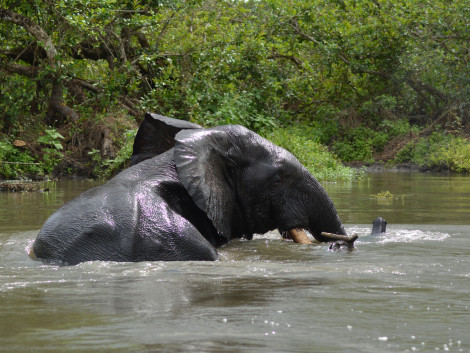

News | 18.03.2022
More than 400 delegates and observers from around the world met in Lyon, France, from March 7 to 11, 2022, for the 74th meeting of the CITES Standing Committee.

As a reminder, CITES (Convention on International Trade in Endangered Species of Wild Fauna and Flora) has 184 member states. It acts for the conservation of biodiversity by regulating trade in wild fauna and flora. CITES regulates international trade in nearly 38,000 species of plants and animals, ensuring their survival in the wild for the benefit of both local populations, who thus preserve their livelihoods, and the global environment.
The CITES permit system aims to ensure that international trade in CITES-listed species is sustainable, legal and traceable, and contributes to both the livelihoods of the local people who live closest to them and to the economies of individual countries, in a way that preserves the health of the planet and the well-being of people, in line with the United Nations Sustainable Development Goals.
The Standing Committee, which provides guidance to the Secretariat on the implementation of the Convention and oversees the management of the Secretariat's budget, meets once a year, as well as just before and after each meeting of the Conference of the Parties.
The following is a summary of the discussions and recommendations on trade in plant and animal species related to the tropical timber industry.
A CITES resolution on forests
The Committee noted the importance of forests and trade in tree species and agreed that it was premature to present a resolution on CITES and forests, as had been discussed. The Committee recommended that the Secretariat submit draft decisions to the Conference of the Parties that ensure that the Plants Committee and the Standing Committee participate in the development of any resolution on CITES and forests.
Discussions on tropical timber species
Trade from Cameroon in Afrormosia (Pericopsis elata) was discussed. The Secretariat assured that it would continue to work closely with Cameroon on the issue of CITES compliance for the Afrormosia trade. Cameroon was asked to provide the Secretariat with on-the-ground assistance, and to conduct a technical assessment and verification mission to better understand how CITES authorities ensure that timber species are legally purchased and exported in full compliance with CITES requirements.
The same request was made to Vietnam regarding all timber species from that country.
In addition, exports of Dalgerbia spp. (rosewood, rosewood, ...) from Lao PDR are still suspended, including finished products such as sculptures and furniture.
Trade in Pterocarpus erinaceus from Guinea and Nigeria was also the subject of recommendations to the countries concerned regarding compliance with CITES requirements.
The Committee decided to maintain for the time being the recommendation to the Parties not to accept exports or re-exports for commercial purposes of specimens of Diospyros spp. and Dalbergia spp. from Madagascar. It made recommendations regarding trade in these species and encouraged Madagascar to continue its control efforts.
Discussions on large mammals
During this meeting, the Committee discussed the draft changes in the Nomenclature for the African elephant; its notes will be submitted by the Animals Committee to the next meeting of the Conference of the Parties. The Secretariat was tasked with issuing a notification to seek the views of Parties and other stakeholders on the possible effects of recognizing the African Forest Elephant as a separate species from the African Savanna Elephant for CITES purposes.
Recommendations on the eradication of the ivory trade, particularly in Congo, Cameroon and Nigeria, were formulated. For example, it was recommended that States use the ETIS Online system to submit information on seizures. The Committee called on countries hosting African elephants to expand their efforts to protect their living environment.
Summaries of the meetings are available here.
tag(s) :